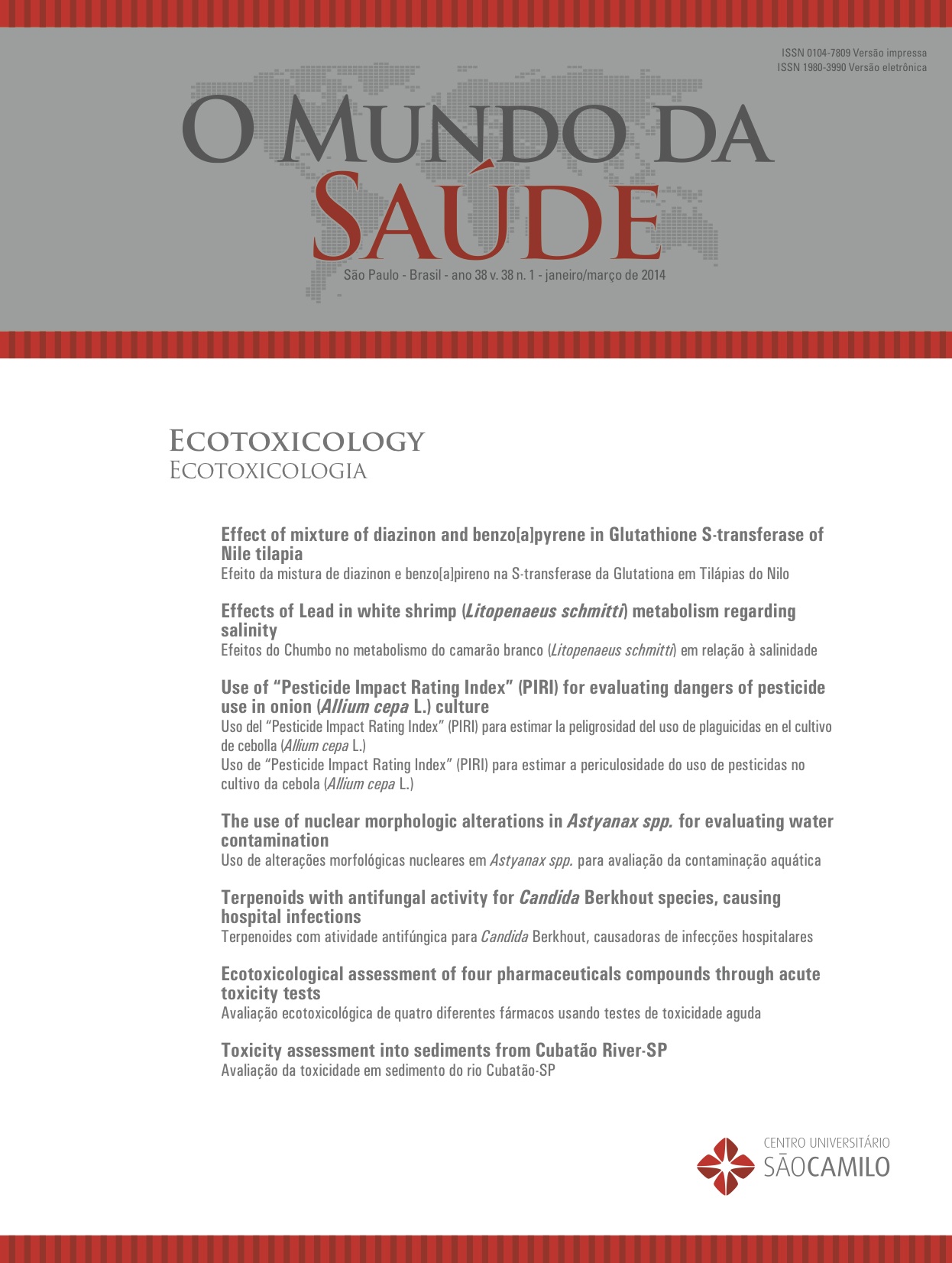Toxicity evaluation of herbicides used in sugarcane crops to Zebrafish (Danio rerio)
DOI:
https://doi.org/10.15343/0104-7809.20143801086097Keywords:
Herbicides - toxicity, Diuron, Acute Toxicity, Complex MixturesAbstract
In nature, organisms are constantly exposed to more than one toxic agent, and although the phenomenon of chemical interactions
are known for some time, there are few previous studies that emphasize observation of the effects resulting from
exposure to two or more substances. The aim of this study was to evaluate the combined effect of the mixture of herbicide
Gesapax 500® (ametrina 500 g/L) and Velpar K® (diuron 468 g/kg + hexazinone 132 g/kg) on zebrafish (Danio rerio). The test
was based on the Fish Embryo Toxicity (FET) from OECD, lasting 96 hours. The concentrations tested were: 0, 21.22, 29.52,
41.08, 57.17 and 79.56 mg/L Gesapax 500 vs. 0, 15.21, 21.17, 29.46, 40.99 and 57.04 mg/L Velpar K. Tests were conducted
in triplicate and evaluated daily. LC50-96h was determined to 41.705 ± 8.373 mg/L to Gesapax 500 and 55.460 ± 20.826 mg/L
to Velpar K. The mixture model that best describes the relationship between the two components is independent action and
toxicity of the mixture is dose-dependent, occurring antagonism at low doses and synergism at high doses. The endpoints
edema, delay in general development and in yolk sac absorption and decrease in frequency of heart-beat rate were observed
from the lower concentrations of the mixture. From the data obtained, it is concluded that the mixture of Velpar K and Gesapax
500 is moderately toxic to zebrafish and that the endpoints evaluated were useful in determining its toxicity.






























